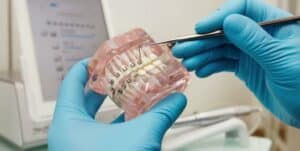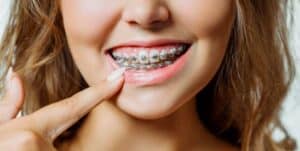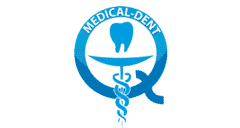Don't like to smile and your crooked teeth make you feel embarrassed? If so, there is no need to delay and make an appointment with your orthodontist as soon as possible. The doctor will choose the most optimal solution for you, which in time will allow you to enjoy beautiful and straight teeth. And how orthodontic braces actually work - you can find out in our article.
Crooked teeth, could it have been avoided?
There are many causes of crooked teeth and malocclusion. Most often milk teeth are to blame. If they fell out too early, the permanent teeth may have erupted unevenly, in the wrong direction or in the wrong place.
Importantly, malocclusion is not only a problem for teenagers, but also for adults. Even if your teeth have been straight until now, this can change. Eight teeth will be responsible for this, which as they grow can push on the other teeth in the arch.
Regardless of the cause of the malocclusion or crooked teeth It is best to contact your dentist as soon as possible. The greater the changes to your mouth, the more time and money you will need to achieve a satisfactory result.
In addition, crooked teeth and malocclusion have serious health consequences. These include a greater risk of tooth decay, inflammation and gum disease, as well as speech defects and even facial deformity.
If you would like to learn more about this topic we recommend our article "Crooked teeth - causes and how to get rid of an embarrassing smile".

What to choose - types of braces
Before going on to discuss how braces work we will take a moment to list the basic types of braces.
We distinguish between fixed and removable appliances.
The first are the distinctive brackets on your teeth, commonly known as 'brackets'. If your orthodontist recommends this type, you will be able to opt for metal, ceramic or sapphire braces.
Removable orthodontic appliances, unlike fixed onesThey are removable by the patient. In this group, you will also find retention braces, which will allow you to consolidate the entire effect at the end of orthodontic treatment.
We wrote more about the cameras in our article "Types of braces in the UK", so if you are interested in this topic we invite you to read on.

How do braces work?
Most simply, it is putting pressure on parts of the teeth, thereby causing them to move within the jaw.
In the case of removable appliances, the sources of force are a screw and springs embedded in a plate. The former is tightened, thus the appliance acts on the dental arch accordingly. Obviously, removable braces only have an effect on the teeth while they are being worn, which is why it is so important in this case to follow the recommendations of the orthodontist.
And how do fixed braces work? Here, the source of force is the wire that is attached to the brackets. Thanks to this force, the teeth are displaced within the bone. Where a tooth was previously located, bone tissue starts to build up and disappears in the new position. Fixed braces operate 24 hours a day.
Whatever braces you wear or will wear, you need to be patient. Orthodontic treatment takes an average of 2 years. Regular follow-up visits to the orthodontist are very important during this time. We recommend that in the case of fixed braces these should take place every 4-6 weeks on average. In the case of removable braces, 8-10 weeks. This allows the doctor to check how the braces are working or if any adjustment is required.
Remember also that, regardless of the type of camera orthodontic, you need to take care of it, but also not forget about proper oral hygiene. We wrote more about this topic in our article "How to care for teeth with braces„.

How much does orthodontic treatment cost?
For many people, a more important piece of information than how braces work is their price. Here we do not have one answer. The cost of orthodontic treatment depends on the malocclusion, the length of treatment, but also the braces chosen.
Prices for fixed braces at our practice start from £600 per arch. Whereas removable ones start from £300 per arch in children and from £350 in adults per arch. You will find a full price list here.
For many people, this is a very large expense. Therefore, in our practice Patients are offered an instalment system. Thus, you can spread the full cost of treatment (the cost of visits and braces) into instalments convenient for you. Importantly, the first 12 months are zero interest, meaning you only pay back the amount you have spent. The instalment system we offer is safe and regulated by 100%. Financial Conduct Authority (FCA number 619628).
And most importantly, if you are struggling with malocclusion or the problem of crooked teeth make an appointment as soon as possible. Misaligned teeth are not only an aesthetic problem, but also a health problem that can worsen over time.
IMPORTANT: Our practice is OPEN. You can find out more about how the visit currently works in our article "Dental visit in the UK during the coronavirus pandemic".

